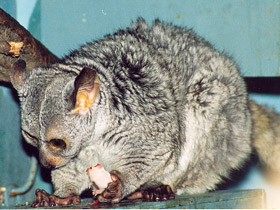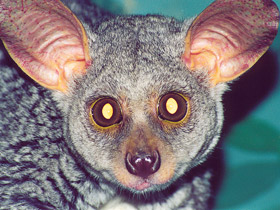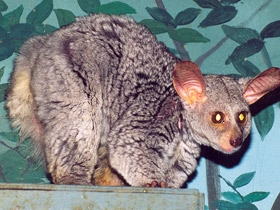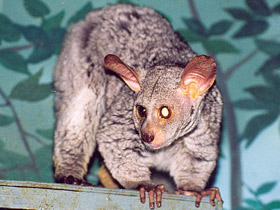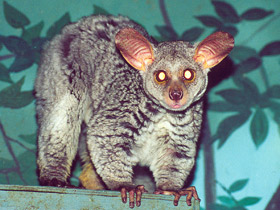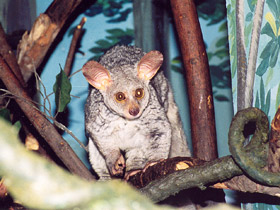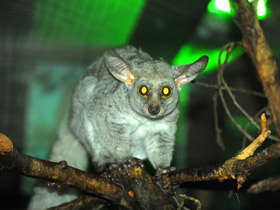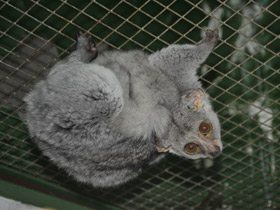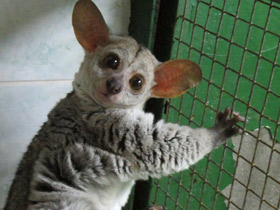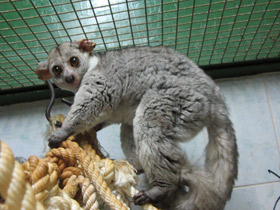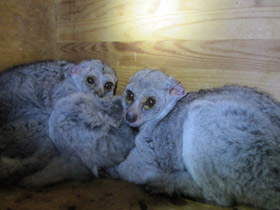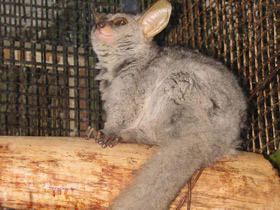The brown greater galago (Otolemur crassicaudatus), the large-eared greater galago or thick-tailed galago
The brown greater galago (Otolemur crassicaudatus), also known as the large-eared greater galago or thick-tailed galago, is a nocturnal primate, the largest in the family of galagos. As opposed to smaller galago species it would climb, walk or run rather than leap.
Taxonomy
Two subspecies of Otolemur crassicaudatus are recognised:
- Otolemur crassicaudatus crassicaudatus;
- Otolemur crassicaudatus kirkii.
The IUCN considers the silvery greater galago as a third subspecies, Otolemur crassicaudatus monteiri. Other sources treat it as a separate species, though with "misgivings". The IUCN Red List assesses all three forms individually as Least Concern.
Description and habitat
Otolemur crassicaudatus is a nocturnal lorisiform primate, the largest of the galagid family. It has a body length of over 30 cm; a tail length of 40 cm; weighs about 1.2 kg for females and 1.5 kg for males; but appears even larger due to its soft, long and dense fur. Otolemur crassicaudatus inhabits southern and eastern Africa, from Angola to Tanzania.
Its large (up to 6 cm), thin-skinned ears can be rolled into a tube and flattened when necessary. This is so as not to injure its delicate skin. In hot weather, the ears dry out and the animals periodically moisten them with their own urine. During the day, Otolemur crassicaudatus usually rests on tree branches or in flat leaf nests. During sleep, they curl their ears so that they cover the ear canal so as not to hear the noises of the day.
Because of its weight, the fat-tailed Otolemur crassicaudatus is not as jumpy as the Senegal, but it can still leap two metres.
Nutrition
The diet of Otolemur crassicaudatus consists of fruits, berries, seeds, flowers, insects, small lizards, tree frogs, rodents, birds and their eggs. They also scrape resin (gum) and extract sap from trees with their lower incisors and forward protruding fangs. During the dry season, gum may account for up to 62% of the total diet of these primates.
Social behaviour and reproduction
Otolemures crassicaudatus live in small groups in strictly demarcated areas, which they mark with urine and secretions from special glands. They have young once every 1-2 years, and a litter sometimes contains one, but more often 2-3 young. The newly hatched young first remain in the nest hole, and the female carries them from place to place in her mouth if necessary. The mother feeds her young with milk for 70-140 days.

















